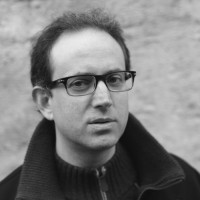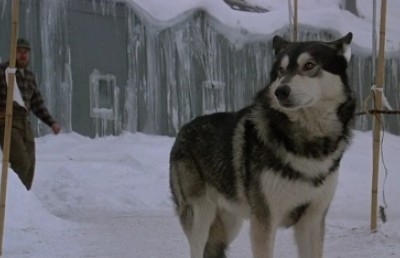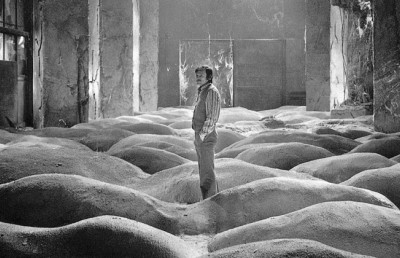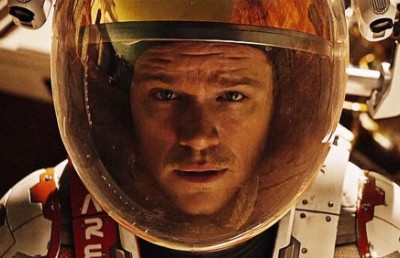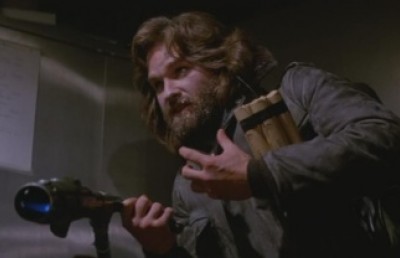The Passion of the Zone (Pt. 2)
Ecological Shortsightedness and the Limits of Auditory Extension in Andrei Tarkovsky’s Stalker
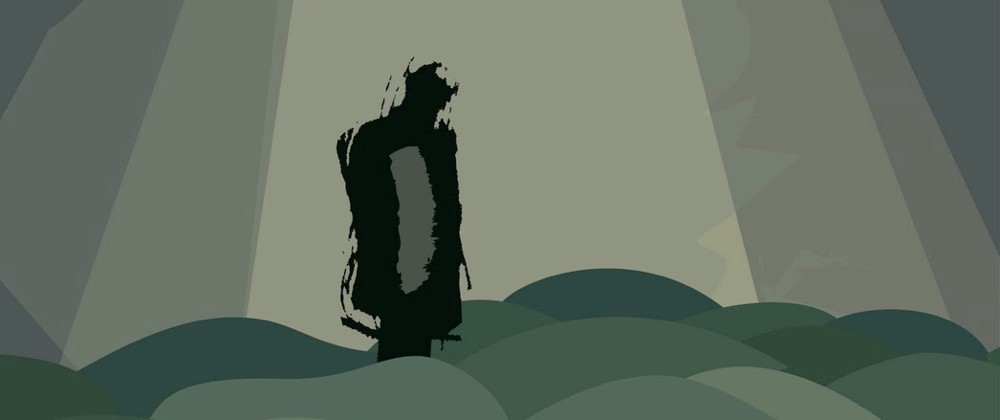
The World Inside the Zone 1
The Zone’s particularities have to do with this essential fact: the world comes into being through attention directed to one’s immediate surroundings, limiting the importance of the world that is perceivable in the distance. The space of the Zone thus presents a variation on Schafer’s idea of the lo-fi environment: though the Zone doesn’t cut people off from the extended environment because of the constant presence of noise, it still emphasizes awareness of a very limited range at the expense of that which lies in the distance. This foreshortened space is tied to the film’s main reflexive strategies: the artificiality of sound/image relationships within the Zone, and the use of the camera as a presence that, despite its languid pace, often calls attention to itself as being the agent responsible for bringing the world into being. Therefore, there is a complex relationship between camera perspective and the perspective of the three characters that make their way through the Zone.
Donato Totaro offers several examples of shots that he associates with different levels of subjectivity. He divides these into two main categories: internalized subjectivity, in which the images we see might reflect a character’s dream; and externalized subjectivity, in which a shot can’t be clearly connected to a character’s physical perspective but which nevertheless reflects a character’s experience of the space (2001, 255). To these I would like to add a third category consisting of those instances in which the camera takes on a diegetic presence, no longer conveying an internal or external subjectivity but moving towards the idea that it is an autonomous entity in its own right. As I will illustrate, certain shots can be read as transferring from the subjectivity of an identifiable character to an unidentifiable presence, sometimes within the space of a single long take. Short of suggesting that the camera itself displays moments of its own subjectivity, I argue that these reflexive shots call attention to the camera’s role in bringing the cinematic world into being, just as the three men bring the space of the Zone into being through their own directed attention. Through this reflexivity the film thus binds the audience to the characters through a shifting process of identification, similar to the shifting spatial geography of the Zone that is articulated through the film’s approach to sound/image relationships. Importantly, tracing the camera’s ability to bring the world into being necessitates attention to the peculiarities of sound/image relationships inside the Zone, and much of this section is devoted to a detailed analysis of how this relationship works.
For my analysis of the world inside the Zone, I will break my discussion into examples of the three particularities of sound: the use of ambiguous sound; the shifting quality of offscreen sound; and the simultaneous revelation of sound and implied visual source that suggests the camera’s power to bring the space into auditory being. Many of these audiovisual peculiarities are present in the first two shots following the halting of the inspection car and the end of the Artemiev’s abstract sound treatments that accompanied their ride. I will use these two shots as an introduction to the kinds of audiovisual relationships I’ll be discussing throughout this section.
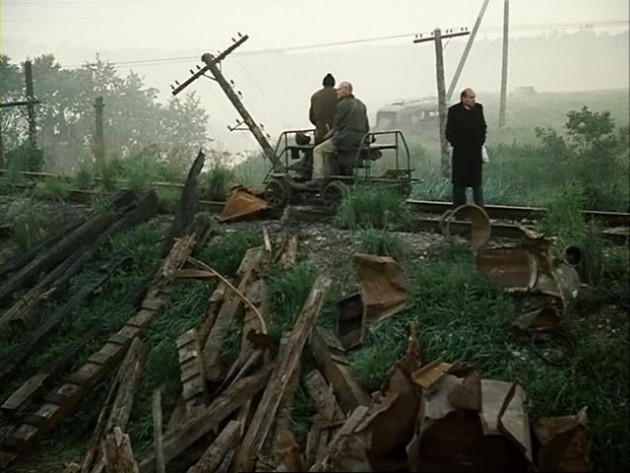
The camera pans the landscape marked by long grass with distant hills dropping down into a valley of mist. For a moment there is a total absence of recorded sound on the soundtrack, a silence broken with a cut to a wide shot of the men sitting on the rail car where Stalker stretches his arms and exclaims the Zone’s beauty. “It’s so quiet here,” he says. “This is the quietest place in the world. You’ll see for yourselves.” This is the beginning of a single shot lasting over four minutes in which the three men slowly disembark from the car and move a few feet down the tracks. As Stalker starts to speak, the ambient soundscape of the Zone emerges, starting with light wind and an almost imperceptible electronic drone. At one point Stalker mentions a nearby river, and as the camera continues to track left this river gradually comes into view, previously blocked by the distant hills and the mist hanging about their peaks. Although the camera only moves a few feet closer to the distant river over the course of its track, the sound of running water emerges once it is visible on the screen. Realism would dictate that the sound of the water should be audible from the very outset of the shot, so the approach taken here indicates an alternative logic at work in establishing audiovisual space. Stalker then disappears down the hill for a moment, leaving Writer and Professor to sit and talk. As they discuss what they’ve heard about the Zone, we hear the sound of a dog howling in the distance. The dog is a rare example of an offscreen sound in the Zone whose implied source will eventually be visible on the screen, though when the dog finally appears midway through their journey in the Zone we never see it in the act of any vocalizations. Its voice is kept to the status of offscreen sound for the whole film, right up until the final shot when this sound distracts the daughter from her telekinetic gaze. The dog is also the only thing the men will bring back with them from the Zone to the town, and as such its offscreen howl is tied thematically to the train sounds described earlier, both of which thread the two spaces together.
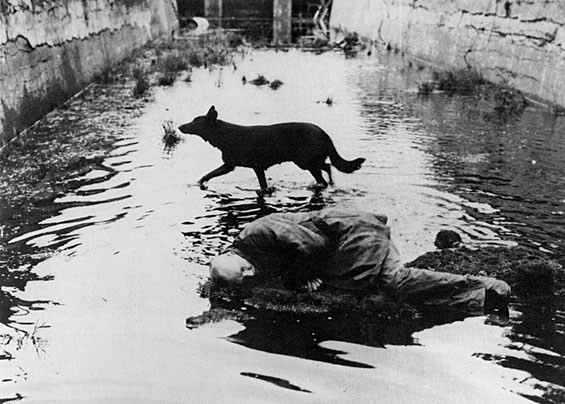
These two opening shots inside the Zone present all of the significant auditory anomalies that make the Zone what it is. First, the extreme quietude at the beginning sets up the idea that the Zone is an unstable space that comes alive as a result of being observed, a kind of geographical embodiment of the Heisenberg principal. As Stalker tells his companions a little while later, “I don’t know what’s going on here in the absence of people, but the moment someone shows up, everything comes into motion … Everything that happens in the Zone depends on us.” It is as though there is no sound in the Zone unless there is someone there to hear it, a play on the old question concerning trees falling in the forest. The Zone begins as quiet as Stalker’s bedroom, but in an environment that should be filled with ambient sounds. Instead, such environmental sounds emerge as though from nowhere a short while after their rail journey stops, perhaps a reflection of the ear’s need for an adjustment period to hear quiet sounds after extended exposure to louder sounds, but also suggesting the Zone’s unstable properties.
The idea of attention bringing the auditory world into being is furthered by the emergence of the distant water sounds only when the water is clearly revealed by the camera. In this world, offscreen sound may exist to suggest the world outside one’s direct attention, but it can’t be trusted. Very often, as in this example, the sound of things that can be pinpointed within the frame will only exist when they enter this frame.
Finally, once the absolute silence in the first shot has been lifted, there emerges a light acousmatic tonality reminiscent of the resonant decay within a piano after the strings have been strummed by hand with the sustain pedal in effect. This sound will recur frequently throughout the Zone, along with processed choral sounds, and is one example amoung several of a soundscape that may or may not be audible to the characters. The source of these acousmatic tonalities is never revealed, and they provide the primary examples of ambiguous sound that keeps the Zone from being entirely grounded within conventional ideas of the diegesis. This kind of ambiguous sound causes what Truppin suggests is the audience’s inability to fully accept the diegesis, resulting in a level of identification with the characters suffering the same problem.
Zonal Trajectory. The rest of my discussion of the Zone will be non-linear, grouped around types of audiovisual relationships. So, preceding this I will briefly lay out the trajectory of the men through this space based on key events and their associated geographical landmarks. After disembarking from the inspection car, Stalker sends it back down the tracks from whence they came. The official start of their journey into the heart of the Zone begins near an abandoned car containing the skeletal remains of previous travelers. The modus operandi for their journey through the Zone is then revealed: they proceed in short lengths defined by the distance they can throw a metal nut tied to a length of cloth bandage. The implication of this method is straightforward: you can only trust that which is within very short range, on a path predetermined by one’s directed attention, and in finite trajectories that do not necessarily follow each other in a linear fashion.
A short while into their zig-zagging path they near the bunker that houses the Room. Though only 200 feet away, Stalker refuses to move directly towards it. Writer grows impatient with this method and decides to go towards the bunker on his own. He is stopped in his tracks by an unexplainable experience, and returns to the other two to follow Stalker.
Later it is Professor’s turn to defy Stalker’s method. Having left his backpack on the ground near what is called the “dry tunnel,” Professor insists that he goes back to get it. Stalker refuses, and he and Writer continue on through the tunnel, leaving Professor behind. When they emerge from the tunnel, however, they discover Professor seated at the exit – which turns out to be the point from which they started. The Zone has played a geographical trick on them, and all three men are now convinced of its instability. Here they take a rest.
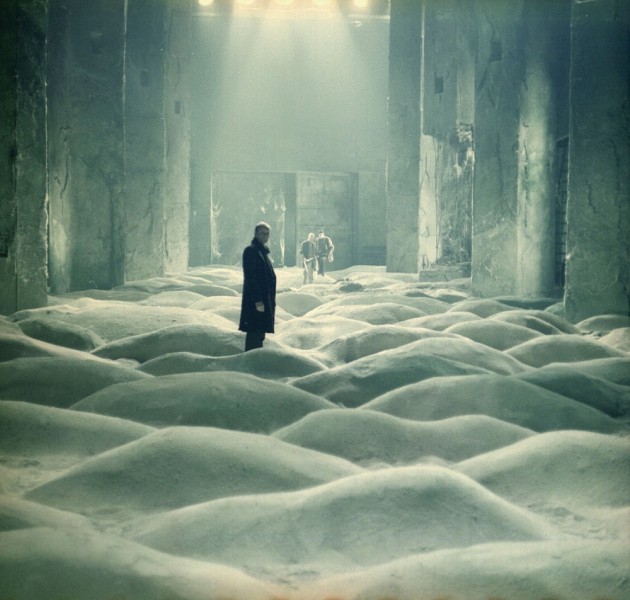
Later they continue through a long length of drainage tubing until they reach the “meat mincer,” a room filled with sand dunes in the middle of which lies “the pipe,” a tube leading down beneath the ground. Writer enters this room by accident and suffers an existential crisis about the inability of his writing to effect any tangible change within the world, a realization that drives him nearly to break down. Stalker manages to talk him out of the meat mincer, and finally they arrive at the threshold of the Room itself. Adjacent to the Room is a smaller room containing a telephone where Professor calls his university colleagues to inform them that he has beat them to the Room and intends to destroy it with a bomb concealed in his knapsack. Stalker talks him out of it, and all three of them decide not to enter the Room for fear of revealing their true natures to the world.
Invisible Instability. I will now describe several instances of the unstable approach to offscreen sound that permeates the space of the Zone. These are sounds that are recognizable as plausible elements of the environment pictured onscreen, but whose treatment in the sound mix tends to defy the laws of physics, and certainly steps outside the conventions of cinematic realism. Examples of legible offscreen sound that come and go unnaturally are too numerous to list, but they consist mostly of ambient sounds one would expect from the environment (i.e. birds, wind) which are one minute there and the next minute gone, even while the environment on screen remains constant. While experience with the real world teaches us that such sounds are often intermittent in nature, the quality of their emergence and disappearance within the Zone suggests a logic that defies our expectations for a natural environment. A key example comes as we watch Writer and Professor, left alone by the Stalker in the first minutes of their arrival in the Zone, discussing the possible origins of the Zone. Wind sounds fluctuate in both intensity and realism, at some points taking on a more abstract quality that suggests an unnatural presence. When Stalker returns, these sounds cease altogether, as though they were tied to the perceptual peculiarities of the uninitiated men while in the absence of the stabilizing presence of their experienced guide.
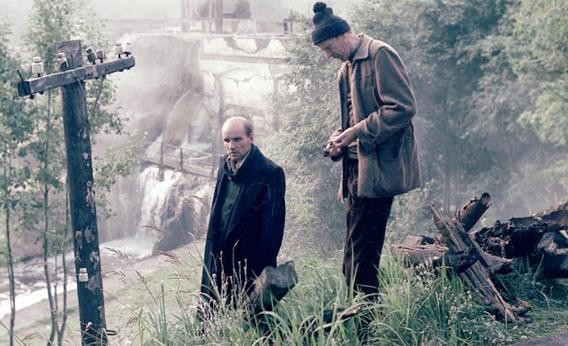
Similar situations emerge as they move forward throughout the space. After delivering a speech to his clients about the dangers of wandering off on their own without following the path of the nut, Stalker throws the next one, and the bird calls start up again, as though the sound of the nut hitting the ground wakes them up, but also suggestive of the space of the Zone coming to life in the presence of directed attention. Another such situation arises in the bunker that houses the Room, a ruined space with many portals to the outside, but with a soundscape that fluctuates from permeable to dead quiet, sometimes with birds audible, other times with nothing. Here the fluctuating soundscape is positioned in direct relation to the crisis the men undergo as they decide whether or not to enter the Room and open themselves up to the world outside: the ambient soundscape suggests varying levels of permeability between inside and out while the men wrestle with their desire to open themselves up. Significantly, once they resign themselves to remaining on the outside, a moment of dead silence emerges on the soundtrack, an instance of null extension that reflects the closed nature of the men themselves.
Particularly important is the unstable quality that the spatial signature often takes on within the Zone. Spatial signature is an interesting element of sound design because it has the power to thread the world of offscreen sound with what we see on screen in special ways. Ambient soundscapes, like birds and wind, provide a sense of the expanded world of the diegesis beyond the frame, but they don’t contain specific sounds that begin within the frame and move outwards. Reverberation on someone’s voice, on the other hand, can do just that: we see someone speak on the screen, and the sound of their voice is treated with reverberation to suggest the spatial qualities of the space they are in, only some of which is visible on the screen. The film plays with this quality of spatial signature as well, and there are two instances of particular note.

Before entering the long tube leading to the meat mincer, Writer stands facing the entryway where he argues with Stalker about the fairness of him being chosen to enter first. Strangely, when he speaks into the tube there is less reverberation on his voice than when he turns his head to address Stalker standing behind him, even though their previous conversation in the area just outside the tube had no such reverberation. Within the tube itself, the sounds of footsteps fluctuate constantly between varying levels of reverberation. It is plausible that the dynamics of the space change from one section to the next as Writer moves down its length, but the fluctuations here take place on a step by step basis, more frequent than one would expect, suggesting a volatile space. When Professor makes a call to his colleagues in the telephone room, his only movement is that of his fingers on the rotary dial. Yet as he dials, the level of reverb on the sound of the rotary fluctuates as though he is moving from one space to another. The direct sound of the dialing remains constant, something we can see on the screen. Yet the behaviour of this sound in the surrounding space is not visually accountable, and here the Zone makes that clear by suggesting the shifting geography around them by the behaviour of the reverberation within this space.
There are also moments when the spatial signature extends beyond the above-mentioned kinds of instability and moves into a wholly abstract realm, tying the shifting quality of offscreen sound to the realm of ambiguous sound. The most prominent example comes as the men near the dry tunnel. We see Writer and Professor sitting down as Stalker calls them over. Then there is the sudden sound of an offscreen splash just before a cut to an image of water at the bottom of a metallic well, glistening like mercury. Along with the splash comes the sound of processed choral voices, continuing after the splash has subsided as though they are the resonance of the well, the spatial signature of the splash. Here we also slip into the film’s first instance of voice-over narration, the internal thoughts of Stalker that recount the words presented in this chapter’s epigraph. The idea of the tension between the soul and the external world is perfectly encapsulated by the sounds we hear: the internal thoughts of Stalker are diegetic, but not externalized; the splash is clearly attached to an event within the diegesis; and the sound of the processed voices extends from this splash through to an ambiguous realm that could move outside of diegetic space. This moment illustrates the connection that the spatial signature can have to both the concrete reality of a film’s proposed diegesis and the world outside that diegesis.
Using the choral sounds as the reverberant signature attached to the sound of the rock falling into the well reflects Randy Thom’s notion of the “acoustics of the soul”: sounds that defy the academic jargon encapsulated by the concept of the “diegesis” by occupying multiple registers at once (2007, 2). In situations like these, spatial signature works equally well as a marker of both internal subjectivity and of the space visible on the screen, the resonance we hear suggesting the “acoustics” of a listener’s “soul” while grounding the sound with the space in which the listening takes place. This rather far out analogy happens to be particularly apt in this moment from Stalker when the idea of friction between the soul and the outside world is first spoken. Sounds have an internal resonance for their perceivers as well as an external resonance within the space, and spatial signature can reflect both simultaneously, acting as the Room that can open internal experience to the outside world.
Later in the film it is revealed that this shot of the well is a close-up of the interior of the pipe that sits inside the meat mincer room into which Writer drops a rock before he has his existential meltdown. The shot of the water inside the well foreshadows Writer’s crisis of connecting to the world, and it uses this ambiguous spatial signature as part of the foreshadowing effect: the acoustics of Writer’s soul resonate inside the well, the auditory manifestation of the bridge between inside and outside that Writer could not effect in his own work. The shot of the well thus also marks the film’s first break from temporal linearity, an example of the narrative reaching into its own future, extending into space that hasn’t been revealed yet, just as spatial signature reveals offscreen space to the viewer.
The spatiotemporal anomalies in the scene described above become more pronounced as Stalker and Writer make their way through the dry tunnel. The ambiguous choral resonance continues along with the loud rushing water. All of a sudden there is a dramatic cut to a close-up of burning embers. The rushing water sound from the previous shot continues but immediately becomes unstable now that it has assumed offscreen status. The sound of the rushing water diminishes, the sound of the squeaking lamps returns, and the sound of choral resonance becomes more pronounced. As the camera tracks left from the embers over a pool of water, the sound of the rushing water diminishes further until it is suddenly gone, while the sounds of Writer and Stalker talking move quickly between reverberant and non-reverberant treatments. Finally, we cut back to a shot of Writer and Stalker emerging from the tunnel to find Professor seated eating his lunch, the sound now stabilized once again to reflect what is visible on the screen: non-reverberant voices with light sounds of dripping water. The camera tracks back to reveal a fire in the foreground, its crackling sounds emerging once it is visible on the screen. Here they realize that the Professor hasn’t moved from their initial position, meaning that Stalker and Writer have gone full circle when they thought they were advancing forward: evidence of the unstable spatial geography of the Zone as conveyed by the film’s approach to offscreen sound. And now, as though indicating their heightened sense of the Zone’s instability, the sound of their footsteps as they walk out of frame are reverberant while their voices are not.
The sound across this entire sequence, beginning with the water splash and ending with the sound of the three men talking by the fire, functions as a kind of soundscape composition employing many of the sound motifs that have been present throughout the Zone, yet mixing them together in ways that disrupt their previous presentations. It’s as though the space is collapsing in on itself, something that the men believe has taken place when they discover the circularity of their movements. Such spatial disorientation is often a feature of soundscape composition, and the use of sound effects as a kind of soundscape composition here reflects composer Edward Artemiev’s contribution – as consultant on the sound design – to the compositional nature of many of the film’s auditory treatments.
In the end, we can think of the relationship between a sound and its spatial signature as one that moves from null to vast extension: the original sound event extends outwards, activating the surrounding space. In the Zone, the realm of vast extension is unstable, demonstrating the shifting possibilities of the space outside of view. The ambiguous treatment of spatial signature in the film reflects an approach to camera movement that emphasizes the importance of what is on screen at the expense of anything that lies outside the frame. I will now turn to a discussion of how camera movement in the Zone aids in establishing this nearsightedness through a strategy by which shots that might be labeled as a subjective representation of character experience take on a life of their own and become markers of the camera’s own presence as an entity in the Zone.
Visible Creation. The volatility of the Zone is not only tied to the movement of the men throughout the space, but also the movement of the camera that follows them, often bringing the space into audible being as it goes. The film’s strongest articulation of this principle comes at the dry tunnel when Stalker and Writer leave Professor behind to find his knapsack only to discover him waiting at the other end of the tunnel. Before leaving Professor, the three men find themselves inside a tunnel, their voices reverberating in the space as they argue over the missing knapsack. Stalker and Writer then carry on without him, and as they emerge from the interior space the reverberation on their voices stops, consistent with the distinction between the two spaces. However, sounds that are not attributable to things pictured within the frame float in and out of the sound mix, from reverberant drips to the sound of running water. When the camera then pulls back and tilts down, a distant waterfall is revealed, and the sound of rumbling water emerges louder than any heard previously. Logically, the sound of the waterfall should have been audible a few seconds before when the camera was positioned just a few feet away. However, the Zone keeps any suggestions of nearby water ambiguous through their shifting quality in the mix until the camera reveals the water on screen.
This sense of the camera bringing the space into being as it moves is augmented further as we watch Writer move out of frame screen right, followed shortly by a track in the same direction. As the camera tracks, we hear a distinctive squeaking noise timed to the appearance of hanging lamps on metal chains within the frame, as well as the emergence of very loud rushing water sounds just as another tumbling waterfall appears on screen. The two men continue in what they think is a forward direction through the so-called dry tunnel, yet when they emerge on the other end they’re back where they started and find Professor seated there next to his backpack. This scene demonstrates the key principle of the Zone: that all you can trust is what is directly in front of you, and any sense you have of the bigger picture of the space is not reliable.
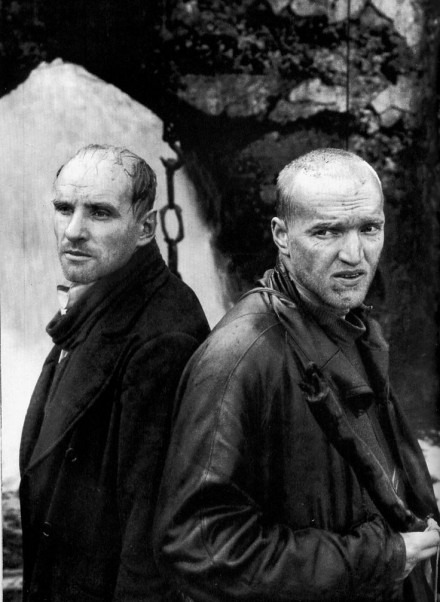
What is most interesting about the tracking shot past the hanging lamps and waterfall is the precise connection between the sound of objects and their appearance on screen. The waterfall provides an example of how unstable the offscreen world is: its absence from the soundscape prior to visual revelation suggests that it didn’t exist at all until it became visible to the camera. The case of the hanging lamps is even more intriguing. The metal squeaking sound emerges with their appearance on screen and stops when they move out of frame. The sound suggests the movement of the lamps. Yet, in fact, the lamps are not moving. Their apparent movement is created by the movement of the camera, an early incarnation of a now popular aesthetic device whereby sound effects are used to punctuate camera movement. In fact, the end of this shot suggests that the squeaking sound does not come from the lamps at all, as the shot is choreographed so that Writer’s re-emergence screen right to correspond with the hanging lamp exiting the frame screen left, thus making it seem as though this squeaking sound is now associated with him rather than the lamp itself. This sound is associated with onscreen movement rather than with any one specifically moving object. Attaching sound to apparent motion reveals the artificiality of cinematic representation, creating sound that is purely a function of the camera’s view on the subject rather than emanating from the subject itself. This is a reflexive move that calls attention to the presence of the camera as responsible for the movement we see on the screen.
The Reflexive Camera. The close connection between camera movement and the emergence of sound is one aspect of a reflexive approach to cinematography that is at its apex in a few particular shots that begin by suggesting character perspective only to reveal that this perspective ultimately does not belong to any of the three men. As noted, this process of transferring subjectivity from characters to the camera itself is an extension of Donato Totaro’s observations about internally and externally subjective shots. In revealing the camera as a presence within the diegesis, these shots also qualify as variations on Totaro’s notion of “creation time” in which something that betrays the logic of real-time exists within the context of the long take aesthetic.
After the men disembark from the railway inspection car, Stalker leaves Writer and Professor for a few moments. As Stalker disappears from the frame, we cut to a shot of the landscape down the hill, tracking forward and tilting up as we hear footsteps in the grass at close range. Here the film’s theme music emerges for the first time since the opening shot in the bar, and we cut to a shot of Stalker kneeling down in the grass, then lying flat out on his stomach, soaking up the Zone that he has missed so much. The status of the tracking/tilting shot is unclear; are the close-miked footsteps supposed to indicate a P.O.V. shot? Or is nearby Stalker following a similar trajectory? This is an example of what Totaro would call externalized subjectivity, related to what Pier Paolo Passolini refers to as a “free indirect subjective” position in which the camera can embody a character’s subjectivity without presenting that character’s literal point-of-view (1988, 183). As Gilles Deleuze puts it, in the free indirect subjective camera, “the distinction between what the character saw subjectively and what the camera saw objectively vanishe[s]” by allowing the camera to assume “a subjective presence, … acquir[ing] an internal vision, which enter[s] into a relation of simulation (‘mimesis’) with the character’s way of seeing” (1989, 148).
This ambiguous strategy is taken to a greater extreme a short while later when Stalker returns to the top of the hill and instructs Professor to be the first to officially begin their journey into the Zone. Professor starts down the hill towards an abandoned car. Immediately following this shot of Professor we cut to a medium shot of the car as the camera moves forward. With none of the men visible in the frame, the camera moves forward in what appears to be another P.O.V. shot: it glides with slight unsteadiness towards the abandoned car, footsteps audible in close proximity. Footfalls are even visible as the grass at the bottom of the frame is depressed with each step. It’s easy to assume, at this point, that we are getting Professor’s perspective. The camera then enters the vehicle through the missing door, and human skeletons are visible in the back seat. The camera stops at the threshold of the window on the car’s other side, and one by one the three men enter the frame from screen left, the sounds of their footsteps quieter than those heard while the camera was moving forward. Professor looks directly into the window, and therefore the lens of the camera, in a moment of direct address. Writer does the same, acknowledging the bodies in the car as those of two people he remembers from the town, packing for their journey into the Zone. So we are left to wonder: did this shot start out as Professor’s P.O.V. and shift to another status midway through? Or is this a representation of some other presence in the Zone? It is as though Professor’s gaze, as he moves in the direction of the abandoned car, leaves his body and continues in that direction while he turns to go around the car and emerge on the other side and meet the camera, a circular shift in perspective within the confines of a single long take.
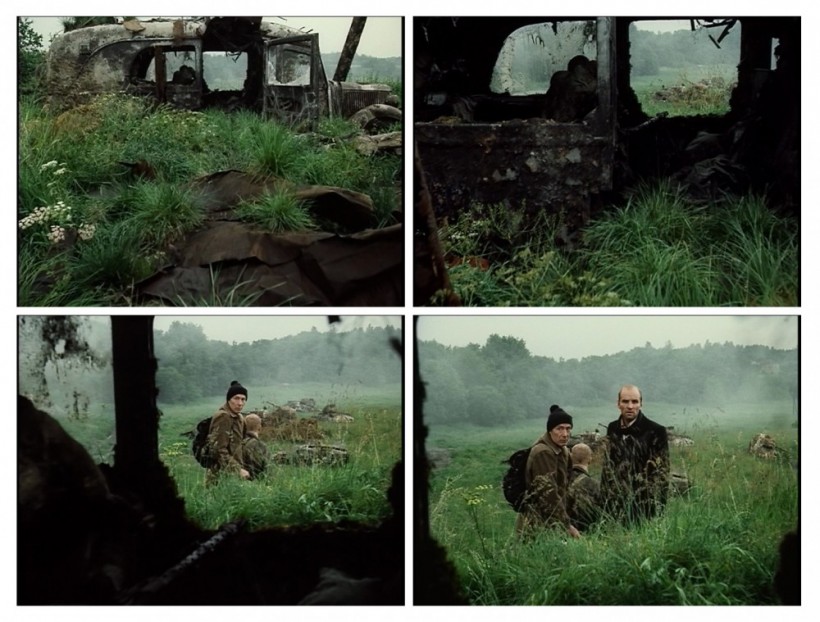
In this example, the process of situating the camera as a diegetic presence goes beyond Passolini’s category of the “free indirect subjective” and moves into different territory; here the camera’s dissociation from P.O.V. within a single long take shifts it away from any simulation of character subjectivity to a vision of its own. But this vision is not that of the objective camera that we’re all accustomed to. Instead, it is a different category altogether, a diegetic presence in its own right that is acknowledged by the other characters. Deleuze goes on to note that Passolini’s interest in the free indirect subjective is to make the camera “felt,” a break from the camera that we’re meant to ignore in more classical forms of narrative filmmaking (1989, 307). In the above example, the camera is not only felt, but also literally seen – by the characters in the film and, by extension, the audience who meets the gaze of these characters through their direct address.
In Totaro’s discussion of this shot, he describes the moment of “creation” as that when the three men subsequently disappear below the frame line, revealing a dramatic dip in the landscape that was not visible through the framing of the landscape alone (2001, 262). For me, the big revelation comes when the shot shifts from such a clear suggestion of individual character perspective to another presence that is directly acknowledged by the characters themselves through direct address. This kind of shot, suggesting the diegetic presence of the camera, is ultimately tied to the film’s final shot of Stalker’s daughter as she demonstrates her own ability to send her gaze outward through space and act on objects external to her body.
The next significant moment of direct address comes in the meat mincer scene where Writer presents a monologue about the perceived futility of his art. He wanted to effect change in the world, but has failed. We see him lying on the ground, with a reverse shot of Stalker and Professor looking at him from a point just a few feet from the entrance. We cut back to Writer, and a single long take moves slowly from a wide shot to a medium close-up as he gets up, sits down on the edge of the pipe, and delivers his monologue. At one point he makes direct eye contact with the lens as though it is the P.O.V. of one of the other two characters who has perhaps approached him as he talked. However, we then cut to a long shot of Professor and Stalker still positioned at the other side of the room, revealing that the previous shot was not specifically attached to one of their perspectives after all. Again, it is almost as though the long take that tracks towards Writer represents a kind of remote viewing on the part of Stalker or Professor, directing their gaze through space without actually moving their bodies. Or, as I have been arguing, a transference from character P.O.V. through the free indirect subjective and on into a reflexive acknowledgment of the camera’s own gaze as a diegetic entity.
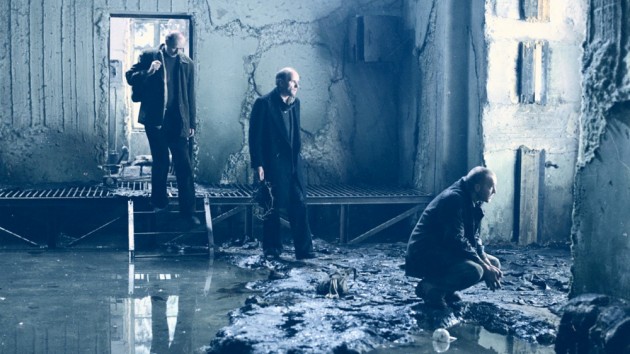
Finally, when sitting on the threshold of the Room, the three men look out into its heart, right where the camera is positioned, as though the presence that has been hovering around their journey has come from within this very space. Given the power of the Room to reach deep into the souls of anyone who enters, there is a certain logic in understanding the previous examples of camera movement as suggesting the process of moving from internal subjectivity to something entirely removed from any of the characters, just as the Room offers the potential to pull their deepest desires out in the world and make them manifest as separate entities. Significantly, after all this turbulent sound and spatial instability, we return to the silence with which their time in the Zone began. As the camera tracks back from within the Room, all sounds disappear for the film’s final moment of absolute silence. Then Stalker says: “It’s so quiet. Can you feel it?”
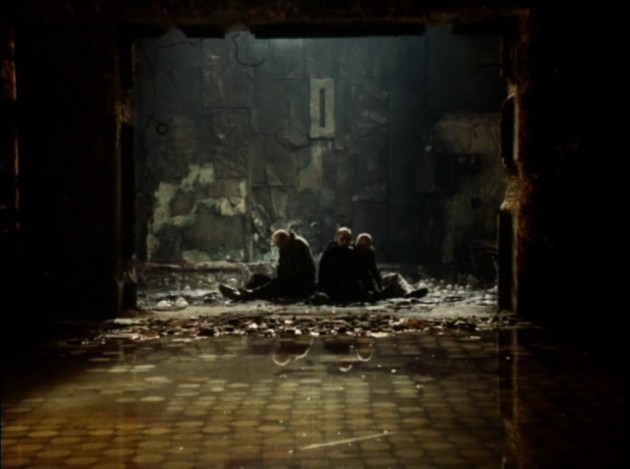
In the end, only the camera enters the Room, and only we the audience are granted a perspective on the Zone from within this magical space. With no acoustics audible, our own souls are left to fill the void. Nothing in the space resonates. It is a blank slate for us to fill. Then, at long last, environmental sound is brought back in as it starts to rain inside the Room, blurring the line between interior and exterior space, again supporting the idea that the room’s power is to reveal the inside to the outside, and vice-versa. This position is finally transferred to Stalker’s daughter in the film’s final shot as the task of creating motion through visual attention is then given over to her as she applies her telekinetic skills to the glasses on the kitchen table.
Touching the World
The notion of creation as a function of the Zone is essential when connecting its peculiarities to Stalker’s daughter at the end of the film. Totaro and Truppin both cite the idea of the camera as a tool of bringing the world into being as an important aspect of how the film represents the space of the Zone. My analysis of the audiovisual ecology of the Zone supports the idea of creation: the shifting and often ambiguous quality of offscreen sound suggests a world in the process of coming into being but not yet stabilized, a stability only offered when the camera reveals space on the screen to which concrete sounds can be attached. Yet the camera also reveals the world coming into being, the visual equivalent of the shifting quality of the sounds that I have described. In the moments of shifting subjectivity described above, the world changes before our very eyes. Usually, the use of the long take suggests that the self-contained shot will, if nothing else, keep the world stable by avoiding the fragmentary and often illusionary nature of montage. Yet as I have shown, there are certain times when a shot will begin according to one logic, and end on another, suggesting that as it has moved through space, it has also changed the very nature of that space. The shifting subjectivity presented by the moving camera acts as a visual corollary to the shifting nature of the Zone’s offscreen sound: both are markers of how the space of the Zone is in constant flux, crystallized only through directed attention. This changing space for the audience is brought about by the camera’s movement, just as the space changes for the three men as they navigate the Zone through their own movements. What the camera’s powers of shifting subjectivity ultimately do is to thread character subjectivity to our own, inviting the audience to participate in the creation of the space revealed on the screen through active attention. Finally, creating the world through directed visual attention is the power that can be attributed to Stalker’s daughter at the end of the film as she literally creates movement in the world by looking at it.
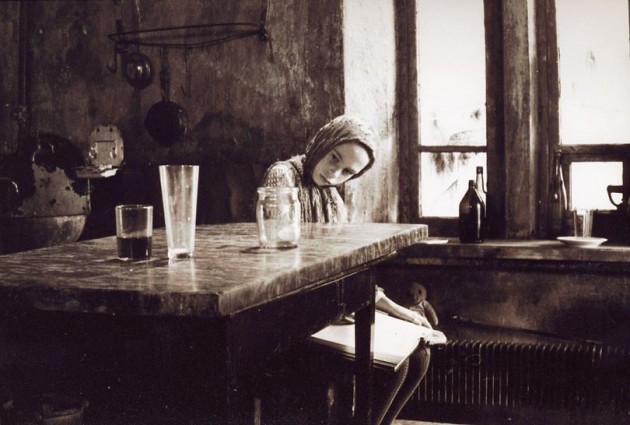
The film’s final shot, suggesting the daughter’s telekinetic powers, illustrates a path across areas of human perception often kept separate: the connection between vision and hearing, and the relationship of both to touch. As a product of the Zone, her mutation is situated as a function of the kind of transsensorial awareness: she brings her powers of vision in line with the power of touch, moving objects with her gaze as though she is touching them with her hands. In fact, there is a way in which all five human senses can be thought of as varieties of touch: light must enter our eyes and touch the retina to create our sense of seeing; sound must enter our ears and set the tympanic membrane vibrating for us to have the sensation of hearing; odors must enter the nose for us to smell; matter must touch the tongue for us to taste. Our bodies stand as entities separate from the world around us, but are filled with pathways to our insides that bring the outside world into our bodies for us to experience it. In a very real way, the notion of the distant observer is a physical impossibility, for we can experience nothing without being literally touched by that which we see, and touching it back in return. The question is this: does the daughter’s transsensorial awareness represent an evolutionary step forward for humanity? Is the dissolution of her boundary between the soul and the external world the way that all humans should go? Or is there some value in remaining closed to the world that surrounds us, as the three men realize on the threshold of the Room?
For many, the key to unlocking the mysteries of the universe lies in unlocking the mysteries of the self, breaking down the boundaries we draw between ourselves as individuals and the world in which we live, for this world also lives inside us. One place to begin this project is by adopting transsensorial awareness, where the lines between the sensory modalities are shown to be highly permeable. There are certain concepts (i.e. rhythm and gesture) that are transsensorial in their scope. We can add the concept of vibration to this list for everything in the known universe consists of vibrating particles, some of which are detectable by sight, some by hearing, some by touch, and others beyond our senses altogether. Yet learning to understand vibrations we cannot directly perceive might begin by better understanding those vibrations that we can perceive. There is an ancient Hindu saying: “Nada Brahma, the world is sound,” the title of and guiding concept for Joachim-Ernst Berendt’s investigation of a “musical” understanding of the universe across the world’s varied cultures (1987). The premise is simple: vibrations bring the world into being. The universe is created by motion. There is no known stillness in the world, only a matter of perceived stillness. Musical principles, consisting of mathematical relationships between different vibrational frequencies, offer a way of understanding the workings of the universe outside our perception by way of an art form that is universal throughout the world. Therefore, Nada Brahma is an expression of the connection between our middle world and that which lies beyond, and suggests a way of knowing that which we cannot perceive by way of that which we can: sound.
Though it is appealing to equate the concept of vibration with music, and thus think of the entire universe as operating according to musical principles, there is also a basic problem to be considered. The word “sound” is used to refer to that which we can literally hear, a function of the distinct sense modality perceivable by the ear. Vibrations above a certain frequency turn into light that we can see, and below a certain point they become something that we can feel but cannot hear. While it is important to understand the connection between these levels of perception, that they are all generated by vibration, it is also useful for us to understand their different levels according to the divisions of our senses. If we have to transcend these divisions in order to make the next step and be able to experience vibrations beyond these senses, then we might ask whether or not this is a good thing. Perhaps maintaining cinema’s dual nature, the distinctiveness of sound and image, is necessary to keep cinema as a medium born of the passion that results from audiovisual friction, just as Stalker suggests that passion results from the friction between the human soul and the world. If transsensorial experiments do finally yield a medium where sound and image are collapsed into the same plane of experience, then perhaps this is no longer cinema. Certainly, a genuinely transsensorial medium would no longer be the sound cinema capable of exploring ecological issues by way of audiovisual ecology.
By moving the glasses with her powers of vision, Stalker’s daughter stands in for the sound that was previously connected with this same kind of movement. In so doing, she connects the vibrational frequencies of light to those of both sound and touch. This is a transsensorial move, but one about which the film withholds judgment. I suggest that Stalker’s conclusion thus presents a conflicted stance on the relationship between human beings and our environments, a conflict that embodies the very fundamental premise of ecology: organisms are simultaneously connected to, and distinct from, their environments. Everything in the universe is made from the same stuff, thus there is a profound connection between the smallest particles of our interior being and the largest processes of the cosmos. On that level, there is no division. Yet on another level, we are bound to know our world through our senses, between which there are physical dividers, and which we embody through our sense of individuation from other organisms and the environment that surrounds us. The powers of Stalker’s daughter are ambiguous in their implications.
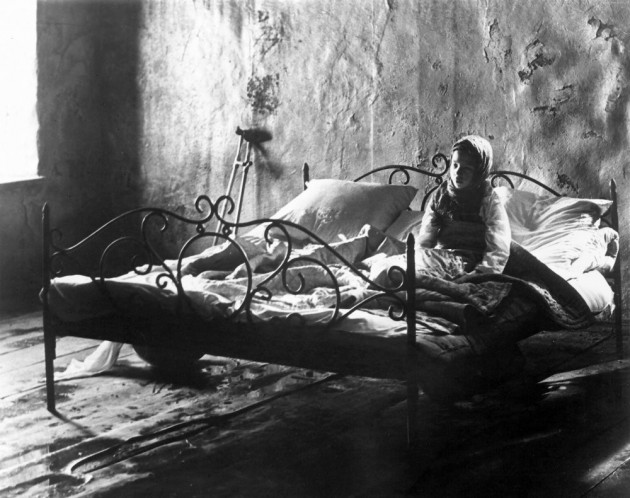
Donato Totaro concludes that the spread of “creation time” into the world after the Zone, as epitomized by the final shot, is indicative of the powerful transformation that the three men experience in the Zone: they have come to a new level of self-awareness, their relationship to the world has changed (2001, 283). Yet the result of their heightened self-awareness is that they should keep themselves separate from the world, that what they have discovered deep within their souls is not commensurate to the world that exists outside. If our insides are made of the same stuff as that which lies outside, then there should be no problem in allowing the Room to bridge the gap between the two. The recognition of the three men on the threshold of the Room is that there is value in maintaining the distinction between inside and outside. Yet the more we keep things to ourselves – the more we keep separate from the environment – the more potential exists for disaster upon breach of containment. In environmentalist terms, this is the problem with toxic waste. So what is the solution? Develop surefire methods to prevent breach of containment? Or develop ways of being that allow for free flow without disastrous consequence?
The same questions can be posed for the relationships between sound and image in film. If one were to dissolve into the other, we would lose the productive tension that can develop around them, and lose our sense of the distinctiveness of our senses. The premise of ecology – the interaction between distinct individuals – suggests that we keep to a middle ground between free flow and total containment, maintaining our awareness of the distinction while concentrating on the interaction between them. The ecological perspective is that of a mid-fi system in which the benefits of the extension characteristic of a hi-fi environment are tempered by a recognition of the value in the limited extension of the lo-fi situation. Transsensoriality leads in the direction of dissolved boundaries between the senses, but it can be balanced with a continued appreciation of the value in the distinctiveness of each sense modality in its own right.
Finally, the power of the Zone is in its reflexive approach to exposing the illusionistic premise of spatial representation in the cinema, and the artificiality of sound/image relationships therein. By positioning the camera as a reflexive entity within the diegesis, and tying this reflexivity to an approach to audiovisual relationships that emphasizes the artificiality of spatial representation in the cinema, the film allows the audience a space of reflection upon the processes by which the diegesis is brought into being.
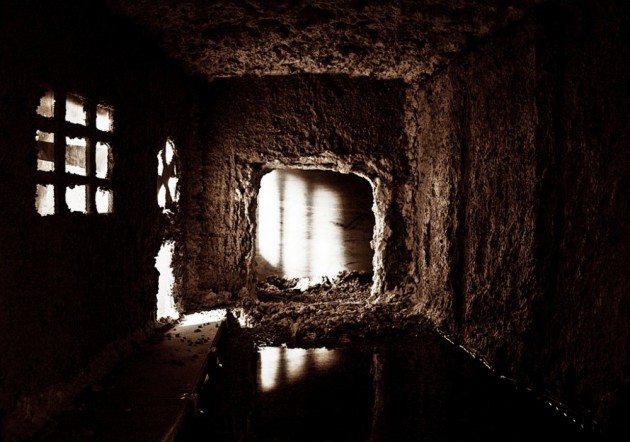
Read part 1 here.
Works Cited
Bazin, André. 1971. “The Evolution of the Language of Cinema.” In What is Cinema?, translated by Hugh Gray, 23-40. Berkeley: University of California Press.
Berendt, Joachim-Ernst. 1987. The World is Sound: Nada Brahma: Music and the Landscape of Consciousness. Rochester: Destiny Books.
Chion, Michel. 1994. Audio-Vision: Sound on Screen, translated by Claudia Gorbman. New York: Columbia University Press.
Christie, Ian. 1981. “Against Interpretation: An Interview with Andrei Tarkovsky.” Framework 14 (Spring): 48-49.
Deleuze, Gilles. 1989. Cinema 2: The Time-Image, translated by Hugh Tomlinson and Robert Galeta. Minneapolis: University of Minnesota Press.
Leach, Jim. 1990. “Hideousness and Beauty.” In Before the Wall Came Down, edited by Graham Petrie and Ruth Dwyer, 203-213. Lanham: University Press of America.
Montagu, Ivor. 1973. “Man and Experience: Tarkovsky’s World.” Sight and Sound (Spring): 89-94.
Pasolini, Pier Paolo. 1988. Heretical Empiricism,, edited by Louise K Barnett, translated by Ben Lawton and Louise K. Barnett. Bloomington: Indiana UP.
Petric, Vlada. 1989/90. “Tarkovsky’s Dream Imagery.” Film Quarterly 43, no. 2. (Winter): 28-34.
Schafer, R. Murray. 1977. The Tuning of the World. Toronto: McLelland and Stewart.
Sterne, Jonathan. 2013. “Soundscape, Landscape, Escape.” Soundscapes of the Urban Past, edited by Karin Bijsterveld.
Thom, Randy. 2007. “The Acoustics of the Soul.” In “Sound in the Cinema and Beyond,” edited by Randolph Jordan. Special double issue, Offscreen 11, nos. 8/9 (August/September). PDF.
Totaro, Donato. 2001. Time and the Long Take in The Magnificent Ambersons, Ugetsu, and Stalker. PhD Dissertation. University of Warwick.
Truppin, Andrea. 1992. “And Then There Was Sound: The Films of Andrei Tarkovsky.” In Sound Theory, Sound Practice, edited by Rick Altman, 235-248. New York: Routledge.
Notes
- This essay, continued from Part I, is a lightly revised version of a chapter from my doctoral dissertation accessible in its entirety here. Read the introduction for stronger grounding in the sound theory to which I refer throughout this essay. ↩

